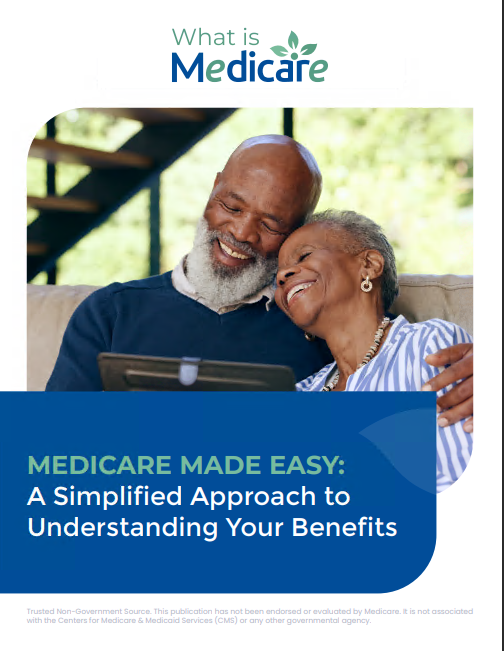Key Takeaways
-
You become eligible for Medicare primarily based on age or specific health conditions, so planning ahead is crucial to avoid late enrollment penalties.
-
Understanding different enrollment periods and Medicare parts ensures continuous, affordable coverage without unexpected gaps or penalties.
When the Clock Strikes 65: Understanding Your Medicare Eligibility
Turning 65 is a milestone—not just personally, but also for your healthcare coverage. Medicare, a federal health insurance program, kicks in primarily at age 65. But simply reaching the magic number doesn’t guarantee automatic coverage. Here’s what you need to know to ensure you’re eligible, stay covered, and avoid any gaps in your healthcare.
The Magic Number: Age 65
Turning 65 is the most common way to qualify for Medicare. You qualify if:
-
You’re 65 or older.
-
You’re a U.S. citizen or a permanent legal resident who has lived in the U.S. continuously for at least five years.
But remember, eligibility doesn’t always mean automatic enrollment.
Automatic Enrollment: Who Gets It?
Not everyone has to sign up for Medicare manually. You’ll automatically be enrolled in Medicare Parts A and B if:
-
You already receive Social Security benefits or Railroad Retirement Board benefits at least four months before you turn 65.
-
You’re under 65 and have received Social Security Disability Insurance (SSDI) or certain disability benefits for 24 months.
If this is you, expect your Medicare card in the mail around three months before your 65th birthday.
When You Must Sign Up Yourself
If you’re approaching 65 and not yet receiving Social Security or Railroad Retirement Board benefits, you’ll need to sign up manually. Keep an eye on these timelines:
-
Initial Enrollment Period (IEP): This crucial 7-month window opens three months before your 65th birthday, includes your birth month, and ends three months after.
-
General Enrollment Period (GEP): Missed your IEP? This runs annually from January 1 to March 31, with coverage starting July 1. However, delays could lead to penalties.
Delaying Medicare Enrollment: Know the Consequences
Some seniors decide to delay Medicare enrollment because they have other coverage, often through employment. But tread carefully. Delaying can lead to lifelong penalties if done incorrectly.
Here’s how to safely delay Medicare:
-
Ensure your employer’s plan qualifies (20+ employees).
-
Sign up promptly during the 8-month Special Enrollment Period (SEP) when your employment or employer coverage ends.
Disability and Medicare Eligibility
Not everyone needs to wait until age 65. Younger individuals can qualify for Medicare based on disability. You become eligible if:
-
You’ve received SSDI benefits for at least 24 months.
-
You have End-Stage Renal Disease (ESRD) or Amyotrophic Lateral Sclerosis (ALS).
In these cases, automatic enrollment typically applies, simplifying the process considerably.
Medicare Parts A & B: Breaking Down Coverage
Understanding Medicare’s core components can clarify eligibility nuances.
Medicare Part A (Hospital Insurance)
-
Covers inpatient hospital stays, skilled nursing facility care, hospice, and limited home healthcare.
-
Typically premium-free if you or your spouse paid Medicare taxes for at least 40 quarters.
-
If you haven’t met these work quarters, you may pay premiums ranging from $284 to $518 monthly.
-
The deductible per hospital stay in 2025 is $1,676.
Medicare Part B (Medical Insurance)
-
Covers outpatient services, doctor visits, and preventive care.
-
Monthly premiums in 2025 average $185, with a $257 annual deductible.
-
Delaying Part B enrollment can trigger a penalty of 10% added permanently to your premium for each year delayed without credible coverage.
Navigating Medicare Advantage and Prescription Drug Coverage
Medicare Advantage (Part C) and Part D (Prescription Drug Coverage) offer valuable enhancements beyond basic Medicare. But eligibility and timing matter greatly here.
Medicare Advantage (Part C)
-
Combines Parts A and B, often including extra benefits like dental, vision, and hearing.
-
Premiums, deductibles, and coverage vary widely by region and plan, so careful comparison during annual Open Enrollment (October 15 – December 7) is critical.
Prescription Drug Coverage (Part D)
-
Covers prescription medications, vital for managing healthcare costs.
-
The 2025 deductible limit is $590, with a significant new cap limiting your annual out-of-pocket expenses to $2,000.
Special Enrollment Periods (SEPs): Your Safety Net
Life can change unexpectedly. If you miss your initial chance or circumstances shift, Special Enrollment Periods offer valuable second chances:
-
Employment-based Coverage Ends: You get an 8-month window to enroll penalty-free.
-
Moving Out of Your Plan’s Area: A 2-month window opens after relocation.
-
Qualifying for Medicaid: Opens up continuous enrollment opportunities.
Staying informed about SEPs ensures you won’t lose coverage due to life’s twists and turns.
Beware of Late Enrollment Penalties
Missing enrollment windows isn’t just inconvenient; it’s costly. Penalties can stick with you for life:
-
Part B Penalty: 10% premium increase per 12-month delay.
-
Part D Penalty: 1% monthly premium increase per uncovered month.
Avoid these by marking your calendars, staying informed, and promptly addressing eligibility windows.
Staying Eligible: Key Steps After Initial Enrollment
Getting enrolled is just the first step. Maintaining your Medicare eligibility and coverage is just as crucial:
-
Pay premiums on time to avoid coverage lapses.
-
Keep your address and personal information updated with Social Security.
-
Review Annual Notice of Change (ANOC) letters sent in September to ensure your plan still suits your needs.
Income Matters: IRMAA Explained
Higher income earners pay more for Medicare. Known as the Income-Related Monthly Adjustment Amount (IRMAA), this affects premiums for Parts B and D.
-
Threshold for 2025: Individuals with a Modified Adjusted Gross Income (MAGI) of $106,000+ or couples above $212,000.
-
Regularly review your income statements to prepare for potential premium adjustments.
Keep Medicare with Coordination of Benefits
Many seniors wonder how Medicare works alongside other insurance:
-
Medicare & Employer Insurance: Medicare is primary if your employer has fewer than 20 employees.
-
Medicare & Retiree Insurance: Usually, Medicare becomes primary, with retiree coverage acting as supplemental.
Ensuring seamless coordination prevents gaps and unexpected expenses.
Don’t Forget Annual Reviews
Every year, between October 15 and December 7, you have the chance to reassess your coverage during Open Enrollment. Plans evolve yearly; your health and needs might too. Use this period wisely to adjust your Medicare coverage for the following year.
Staying Eligible Long-Term
Maintaining Medicare eligibility is straightforward, but be proactive:
-
Always pay your premiums promptly.
-
Stay enrolled in Parts A and B.
-
Report life changes promptly (address, income, etc.).
Doing so ensures continuous, uninterrupted coverage when you need it most.
Securing Your Medicare Coverage with Confidence
Navigating Medicare eligibility might seem overwhelming at first, but knowing these crucial points helps you confidently maintain coverage and peace of mind. If you’re uncertain about any aspect of Medicare eligibility or coverage options, reach out to a licensed agent listed on this website for personalized, expert guidance.









